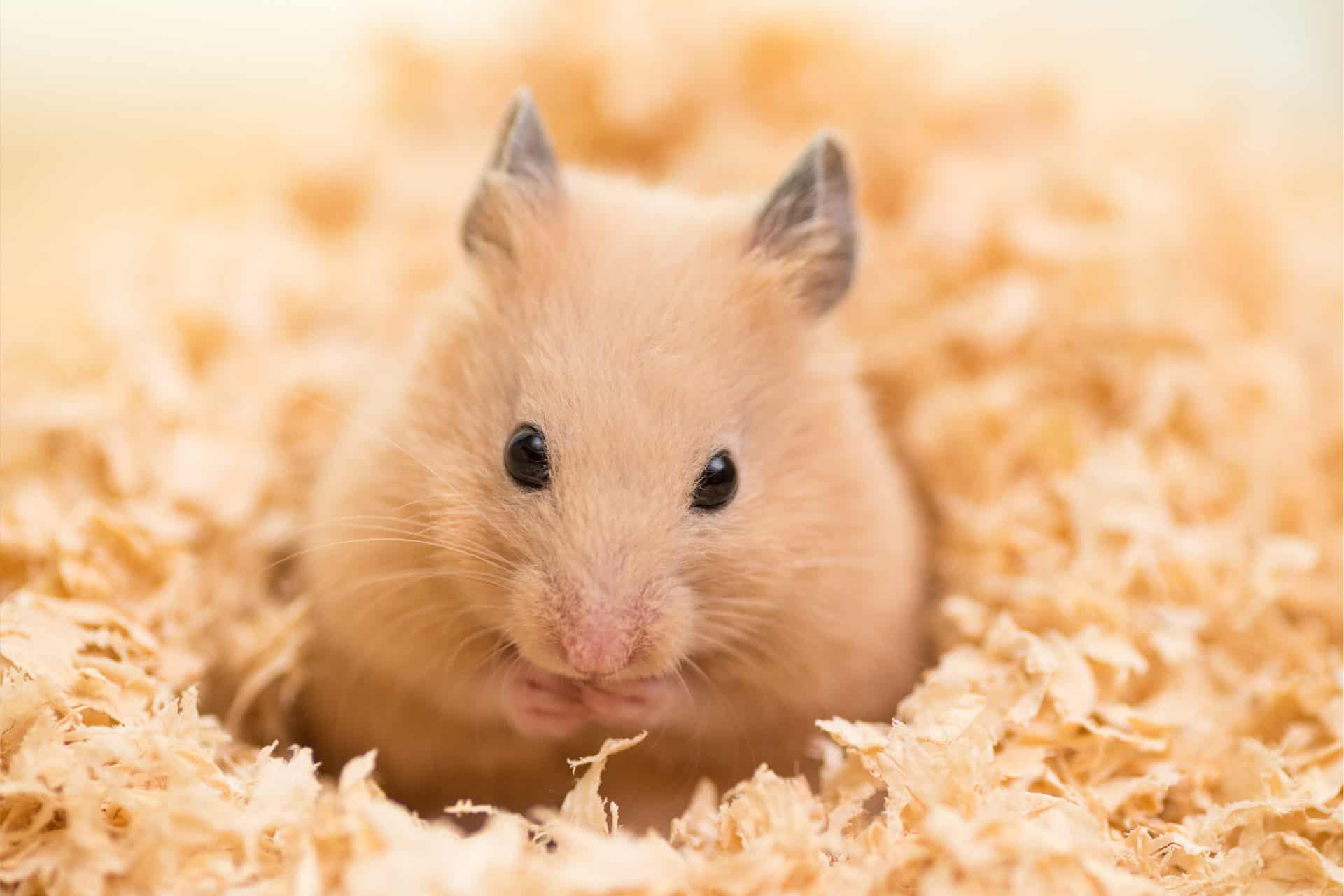Housing your hamster

Creating a comfortable environment for your hamster is easy. Cover their entire floor with non-scented wood shavings, then put ink-free, soft shredded paper on top. This will make a comfy area that’s great for nesting. Dwarf hamsters need to be able to burrow, so make sure their bed is deep enough. Don’t give your hamster any fluffy or fleece bedding. This could get caught in their legs or cause issues if they eat it – stick to shredded paper or other dust extracted bedding.
Your hamster will set up its own toilet area, nesting area, eating area and playing area, so their hamster housing will need to be big enough to accommodate all of this. Give them plenty of toys, such as cardboard tubes and tunnels, so they don’t get bored. If you’re going for a hamster wheel, make sure it’s the right size for your hamster. Your hamster should be able to run with a straight back. The wheel must be a solid structure and axle free, fixed to their wall with a non-slip surface.
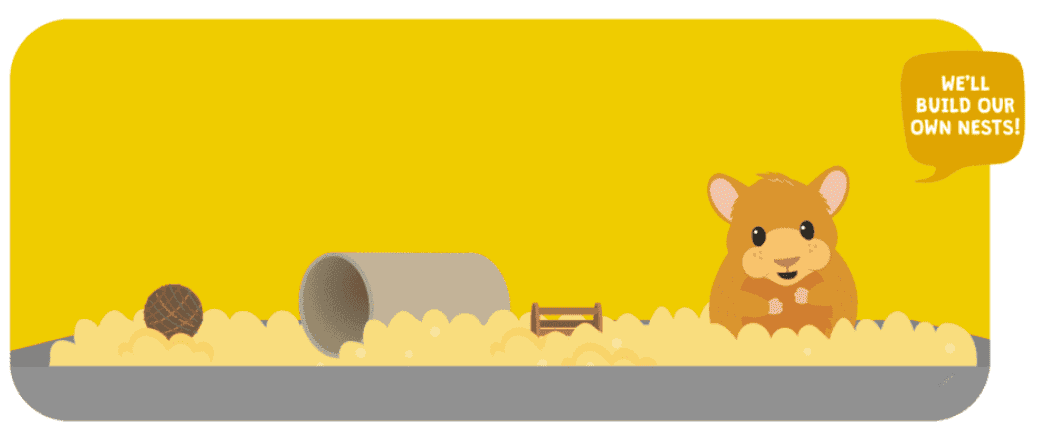
Quick tip
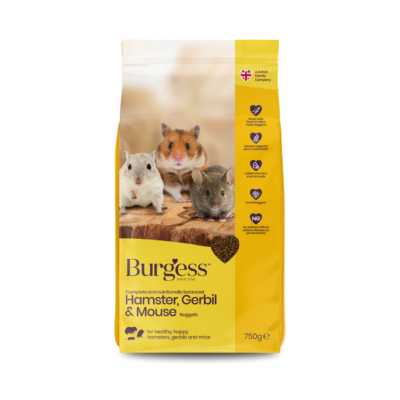
Hamster, Gerbil & Mouse
Did you know?
Housing Checklist
Outside is a no-go area for hamsters. Inside, it’s a bit of a balancing act. You want to keep your hamster at a constant temperature. Avoid putting them in direct sunlight or near draughts and radiators. In very cold weather, give your hamster more bedding or move their housing somewhere warmer to keep them nice and cosy. Hamsters are also very sensitive to high frequency sounds (known as ultrasound) which we cannot hear. House your hamster away from anything that can generate ultrasound, such as TVs, computer screens, vacuum cleaners or sources of running water.
Your hamster needs a nesting box or shelter to retreat to to keep warm, feel safe and sleep in. It should be big enough for them to move around in too. There are many options available or you can use everyday cardboard items, such as empty tissue boxes. Your hamster will enjoy using them and chewing them up!
The essentials you need to make the perfect set up for your hamster are:
- Burgess Nuggets
- Water bottle
- Scattered food
- Platforms
- Solid base
- Thick layer of bedding
- Nesting box or shelter
- Cardboard tubes
- Rope treats
- Tunnels
- Good quality running wheel
- Tunnels
Cleaning hamster's housing
DAILY:
Check your hamster’s enclosure daily and remove any soiled bedding to keep their home nice and clean.
WEEKLY:
Give your hamster’s home a good, thorough clean once a week. Put back a little bit on unsoiled bedding when you put the new bedding in so your hamster has a familiar smell.
MONTHLY:
Every month you should give your hamsters housing a ‘deep clean’ where you take everything out, scrub and disinfect the housing with an animal-safe cleaner.
Perfect for your hamster

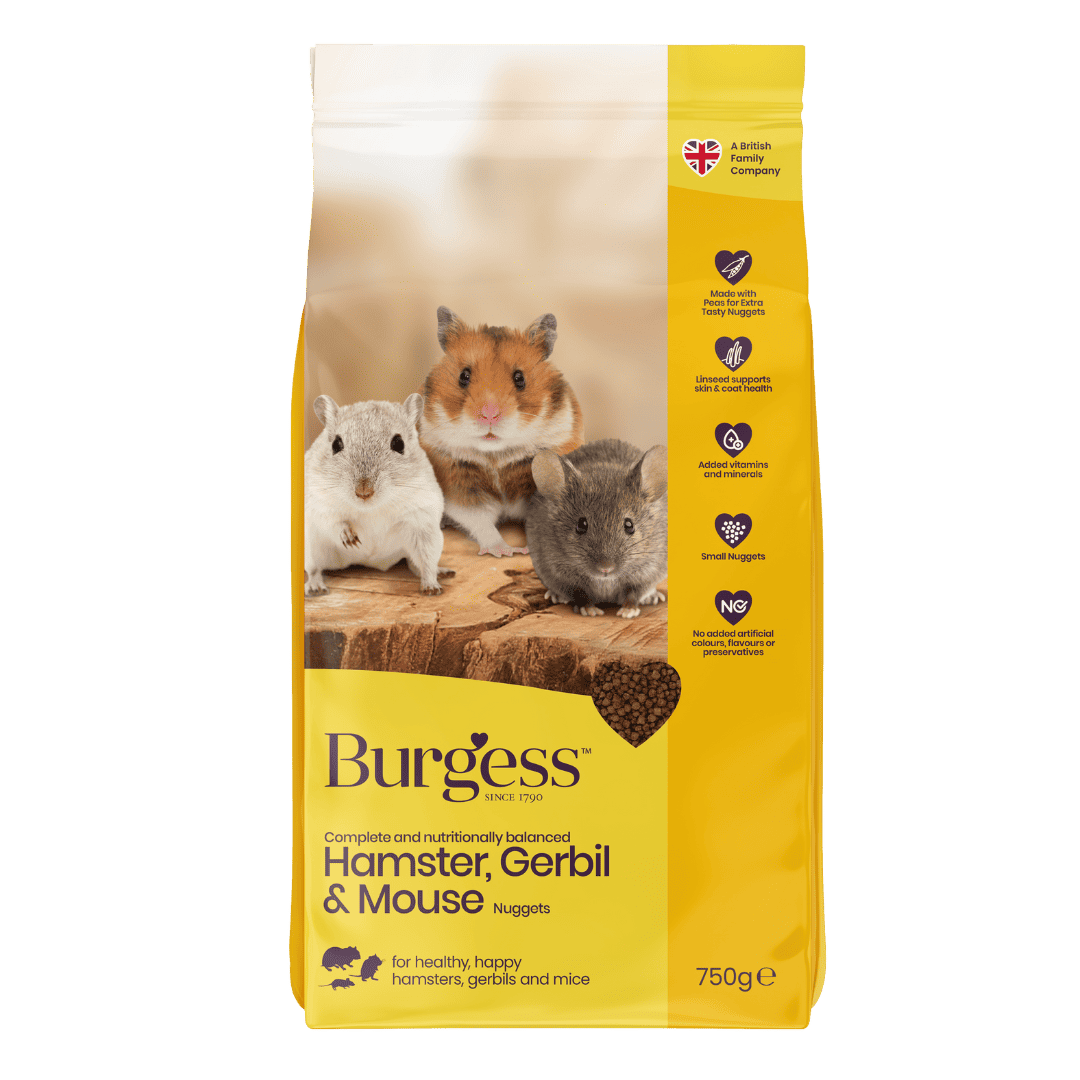

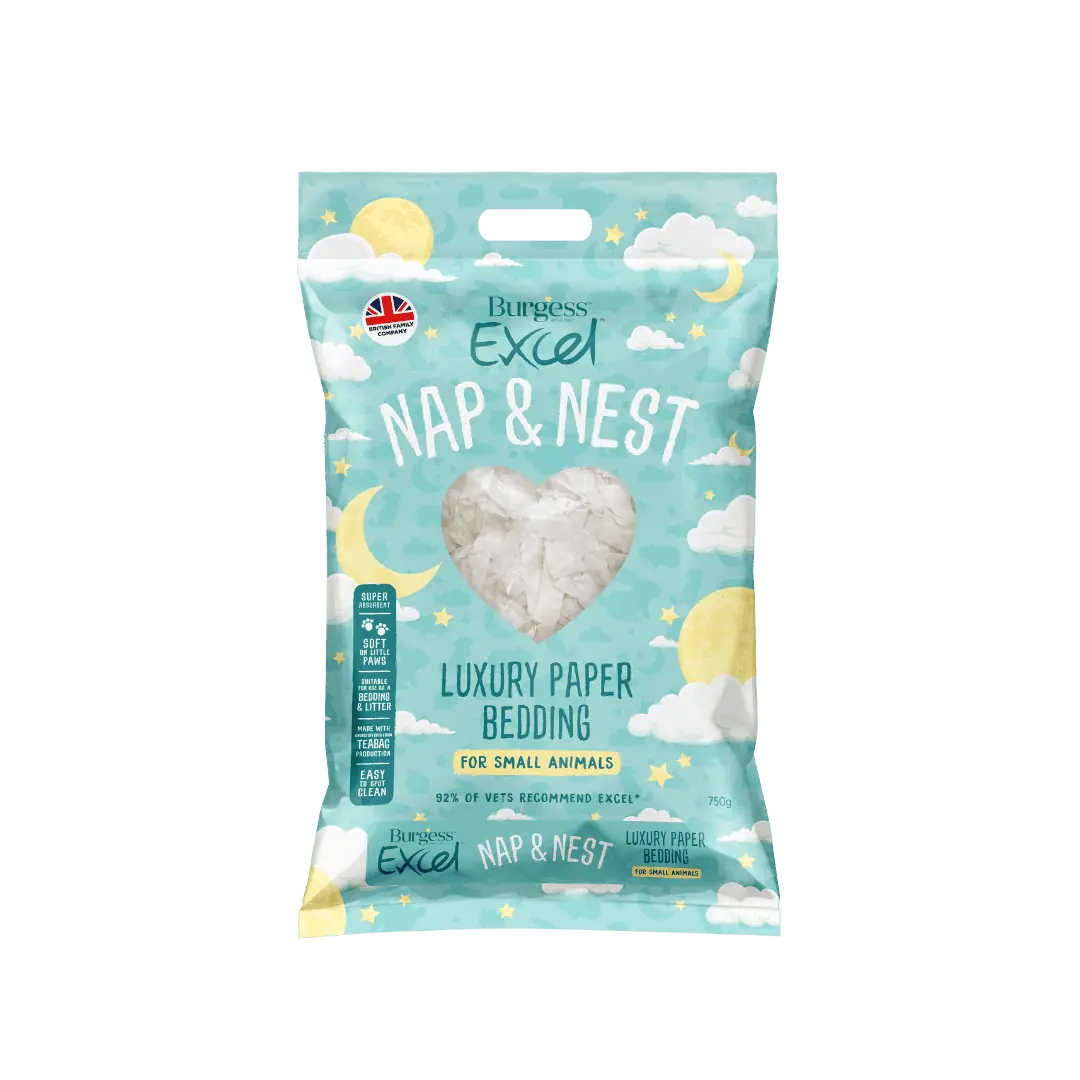
Do you need more advice?
To help you find the right food for your pet have a look at our product range.
You can get in touch with our customer care team who will respond in 3-5 working days. Our dedicated team of pet experts will help you make the right choice.
If you should have any concerns about the health of your pet, always consult a vet.

